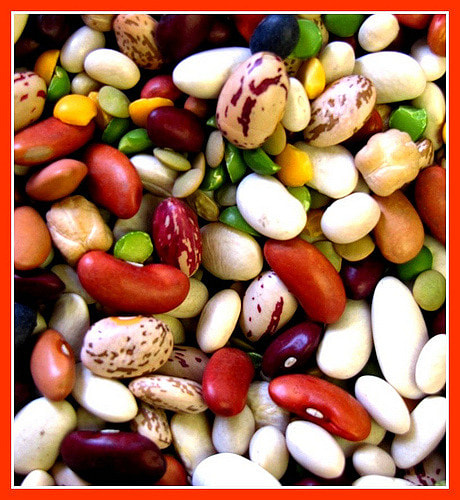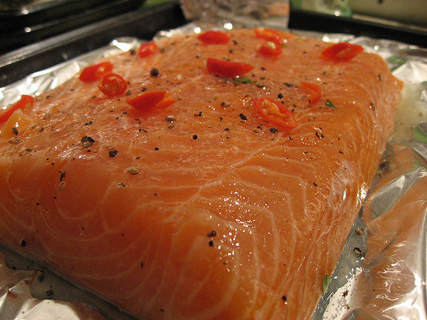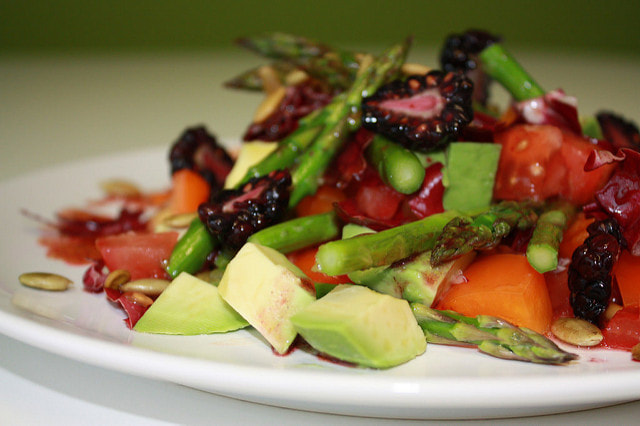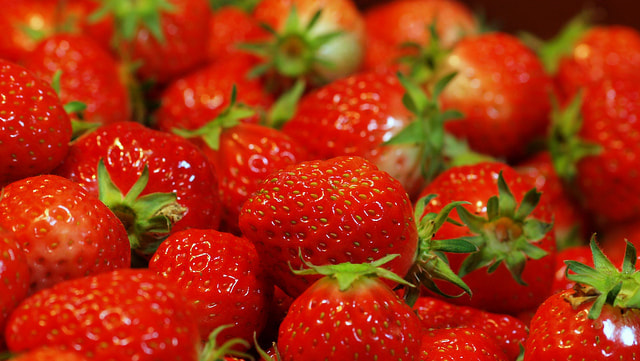Now, more than ever, we have an understanding about sugar and its effects on our health. For example, check out this Ted talk on how sugar affects the brain. We understand how too much sugar causes addictive patterns in our brain because we receive a dopamine release (a feel good neurotransmitter) after consuming it, and when we consume high amounts of sugar regularly, we start to lose our tolerance for it, causing us to crave more to get the same effect. In this way, sugar, in high amounts, acts like a drug to our system.
This is important to understand because sugar is added to so many foods. In fact, it is hidden in foods you wouldn’t necessarily think would contain sugar. Cakes, cookies, and treats are obviously sugary foods, but did you know sugar is also added to things we might eat on a daily basis, and even think of as healthy? Sugar is found in breads, crackers, salad dressings, condiments like ketchup, pasta, flavored waters and juices, and yogurts. Reading labels and identifying things like cane sugar, raw sugar, honey, fructose, sucrose, dextrose, starch, lactose, corn syrup and high fructose corn syrup, agave nectar, all of which are forms of sugar, can help empower us to make different choices that are healthier. We naturally get sugars from fruits and vegetables. Sugar is another term to describe a simple carbohydrate, or simple sugar. Other carbohydrates, complex carbohydrates, also contain sugar but also have fiber and other nutrients which makes a huge difference in how we process and digest that food. Essentially simple sugars immediately require us to produce insulin in order to shuttle the glucose into our cells for energy. Complex carbohydrates, such as sweet potatoes, squashes and other starchy vegetables, contain fiber and have a longer digestive process, essentially creating a more gradual increase in energy. Think about a sugar spike of energy after eating a sweet treat, followed by a crash, versus a more sustained and gradual energy. Now, here is something interesting about how sugar is stored in the body. Sugar is changed to glucose and brought to our cells to use immediately for energy. Any cell in our body can use glucose for energy. However, our cells have a maximum amount they can use at a time, so any leftover glucose that cannot be used gets converted to glycogen and stored in our muscle tissue and the liver. The liver and our muscle tissue also have a maximum amount of glycogen that can be stored, SO, any excess glycogen beyond that can be used immediately or stored gets converted into triglycerides, which are fat molecules, and stored in adipose tissue, or fatty tissues in the body for longer term storage. In other words, if your diet consists of high and consistent amounts of sugar (including all those hidden sources) then likely you are consuming more than can be used or stored as glycogen and thus that excess fuel gets stored as fat. This is exactly why “diet” and “low-fat” products do not work for weight loss goals. In fact, they often create more stress on the body in terms of processing high amounts of sugars and preservatives and can lead to unwanted weight gain! In addition to weight loss, less sugar consumption is healthier for us because we are not stressing our endocrine system with a high need for insulin. Balancing insulin in the blood has direct effect on the brain where we remain sensitive to sugar and thus do not fall into addictive patterns as mentioned above. Furthermore, high triglyceride count in the blood is strongly linked to heart disease, diabetes, and stroke. Limiting sugars to their natural sources like whole fruits and vegetables and avoiding added sugars and excessive refined sugar consumption can not only help you achieve healthy weight goals but also decrease your risk for serious conditions like metabolic syndrome and heart disease.
1 Comment
I invite you to consider the qualities of spirit as the most important of your dietary guidelines.Peace is not a synonym for agreement. Peace is a quality of stillness and acceptance. When we can stop placing our mind’s conditions of peace onto the world, then we can be at peace. When we can let go of the grip we have on our own agenda and find a deeper trust in our lives that is bigger than anything we could have imagined, then we are entertaining peace. We don’t “fight” for peace. In peace, there is no againstness. Peace does not exist when something else stops existing. Peace is in the stillness that is already here. Are you listening for it? Are you able to let go when things don’t go the way you want? It’s hard, I know. We get so invested in our plans and our hopes for ourselves and for others. We get confused and we think that we are being loving. What if loving was much simpler? What if there was no effort in loving, as loving just…..is? Peace.
Orienting ourselves towards peace and loving helps us navigate from an empowered and uplifted state. Imagine, every morning, taking a moment to refocus on your loving nature. Imagine taking a breath, or two, or ten, that was only devoted to peace, to stillness. How might this small activity shift things for you? How might you choose differently in your morning routine? What would stay the same? It’s simple. Not easy. There are many distractions. And the distractions are not going anywhere, and likely will become more compelling. Bringing down inflammation is very much about choosing healthy foods, and it is also about soothing what is inflamed within us. When we attend to the fight within than we are really making progress for our own wellness. So how do you do that? We have to give up the luxury of thinking the problem lies outside of us. Catch yourself when you blame them, or him, or her, or anything external for being the problem. Instead, turn your gaze inward. The answer to your discontent does not lie outside of you. Peace is not about managing your reality into a fragile harmony. It is about soothing the conflict within. Where is your inner conflict? Where are you judging yourself? Where are you pressuring yourself? Where are you suppressing your feelings? When are you telling yourself you are unsafe, unlovable, no good, a failure? How are you hard on yourself? The willingness to explore this terrain is critical. What is also critical is the willingness to let go of the inner conflict.The idea that letting go of all the ways you control and manage yourself with judgments, criticism and fear will most certainly lead to you being out of control and worse off than you are now is how fear maintains its grip on you. We must challenge this kind of thinking, and start to consider what it might be like to trust in yourself. Trust is essential and many of us early on had reasons not to trust. I get it. Me too. And so the journey back into trust becomes all the more worthwhile. It is possible to stop living in fear. Fear of messing up, saying the wrong thing, getting fat, being rejected or abandoned. Yup, all that is there. For most of us. And it does not have to rule you. It does not have to be your boss. Consider that everything so far in your life has brought you right to this very moment. Right to the place where you are starting to consider that you are worth more than you thought you were. Consider that every hardship has been in service to your own awakening into a deeper understanding of yourself. You can trust yourself and you can trust your life. Everything in your life, on the micro and macro levels, is working for you.Every disturbance, irritant, discontent, is grist for the mill. It is a stepping stone for you to reach deeper into yourself than ever before, past all the pressuring and judging and attachments. The world is for your own liberation. Liberation is the opposite of control. Beyond liberation lies peace. Use your lifetime to find your own liberation. I believe this is what deeply serves the world. More so than our anger and our cynicism ever could. It is exciting to me to think of where your liberation might lead you. What might you create? How might you treat yourself and others? Ultimately we each have the opportunity to genuinely love our lives and love ourselves. So cultivate peace from the inside out. Do whatever it takes and then observe the changes in yourself and the world. Then tell us all about it. There is a lot of talk about brain health happening these days.
The excitement is that we are really beginning to see connections in the way we live and what we eat and how that affects our brains. And brains are not just for thinking and problem solving – they control our moods (depression, anxiety, irritability, low patience), our energy levels, whether we can manage the stressors well in our lives, our tolerance for stimulation (noise, smells, touch, movement), our physical coordination and balance, and many many other things that absolutely affect the quality of our day to day lives. So, if you knew that certain foods create inflammation in the brain and increased our likelihood to be depressed or anxious or fatigued, would you give them up? And if you knew there were certain foods that protected your brain from inflammation and toxicity which in turn would improve your mood, would you eat them? I know I would! Simple changes in our diet can go a long way towards feeling great. Omega-3 fats are essential for good brain health and incorporating more of them into your diet can help to improve your mood. Omega-3 fat consumption is also associated with prevention of cognitive decline. The standard american diet is chronically deficient in Omega-3 fats and way too high in Omega-6 fats (interestingly we are seeing rates of neurodegenerative diseases like Alzheimer’s on the rise which may have a lot to do with how inflammatory the standard american diet is). High amounts of Omega-6 fat tips the balance towards high levels of toxicity (free radicals) in the brain which results in inflammation in the brain, which affects our mood and many other things. Increasing our intake of Omega-3 fats is the best way to address this imbalance. It is also important to know that balancing our source of Omega-3 fats from both plant and animal sources is beneficial especially as we get older because the enzymes used to convert the vegetarian sources of Omega-3s into the essential fatty acids DHA and EPA decline as we age. Here are some of the best sources of Omega-3 fats:
Here are some ways to incorporate more healthy Omega-3 fats and improve your mood with food:
Recipe idea: Blend 2 ripe bananas, ½ can coconut milk or 1 cup of milk of your choice, 1 cup plain kefir or plain yogurt, 2 TB almond butter, 1 TB chia seeds, 1 cup fresh or frozen berries (blueberries or raspberries recommended), and 2 cups ice. For added flavor add few drops of vanilla extract or honey to sweeten.
Recipe idea: Try making your own Caesar salad dressing! (Minced garlic, fresh squeezed lemon, 2-3 chopped anchovies, 1 raw pastured egg yolk, extra virgin olive oil, 1 tsp dried mustard, ½ cup organic shredded Romano cheese (omit for dairy free). Whisk together in large salad bowl until desired taste and consistency, then toss in chopped romaine lettuce. Top with another ½ cup shredded Romano if desired.) Delicious with fresh grilled salmon!
Recipe idea: Try this yummy quick recipe for healthy currants and healthy fat: Mix together ½ cup coconut oil, ¼ cup coconut flour, ½ cup dried currants (or dried blueberries!), 2 TB collagen protein powder, 1 tsp cinnamon, 1 TB maple syrup. Pour into small muffin tin for mini “muffins” and freeze for 15 minutes. Eating for wellness is really delicious! When we start incorporating these essential nutrients into our diets and naturally let go of convenience foods that have been highly processed and refined, we bring in more nourishment and pleasure with eating. Enjoy trying these suggestions and adapting them and making them your own! As always, I’d love to hear your discoveries in the comments whether it is yummy recipes or changes you’ve made with your brain health through diet. For more nutritional science on brain health and recipes check out my book, "Eat to Beat Alzheimer’s: Delicious Recipes and New Research to Prevent and Slow Dementia." The book is jam-packed with easy to read science and suggestions, as well as great everyday recipes that are for anyone wanting to improve their brain health and bring down chronic inflammation. Here’s to happy and healthy eating for happy and healthy brains! Food is a basic, primal, essential component of our lives.It plays a role in our personal and cultural history. It informs our biology and genetic expression. It triggers powerful memories and holds negative and positive associations. It has a strong place in the rituals of our seasons, and our day to day lives. Food provides us with a wealth of sensation, pleasure, creativity, nutrients, health, energy, and metaphor.
The choices we make around food are powerful indicators of our relationship to self, namely our attunement with our own needs, our sense of self-worth, our sense of lack and security, our experience of empowerment or disempowerment, and even our relationship with our mothers! Our behaviors around food can highlight the inner experiences, beliefs, or feelings that are driving us. Most of the time, these are unconscious to us. Food is primal and has been apart of our lives from the beginning. Literally as our bodies were forming within our mothers’ wombs we are being nourished by the foods she ate and those flavors and nutrients and even smells were coming in through the placenta and building a foundation for our own relationship with food. Breastmilk by mom is mutable and shifting to meet baby’s needs from morning to night and throughout the months of nursing. Formula is not mutable, but static in its composition, only the amount given changes for baby. Solid foods are introduced in the container of our relationship to our caregivers and family of origin. Are meal times pleasurable for baby? Or stressful? Is baby given appropriate foods at the appropriate developmental stage? The stress of a meal can be internal (too much food, too complex, too soon; or not enough food) or it can be external (is there tension in the family? Does it feel safe to baby to explore food with mouth and fingers?) Family meals can lay additional foundations as children grow up. Is there enough food? Is poverty an issue? Do family members get along? How is food viewed in the family? Is the family mindlessly eating in front of the television and not talking to one another directly? Is there a shared meal from which everyone partakes? Is the children’s food separate from the adults? Is the food beautiful? Tasty? A celebration? A chore? The culture has its role as well. Eat more of this, less of that. This food will kill you, this food will save you. Lose weight. Gain weight. Try and attain an ever shifting and impossible ideal by controlling your relationship with food and your body. Women and men are subjected to this onslaught. We are all told to be beautiful according to media’s standards, which have nothing to do with being healthy, or culturally diverse. As we grow up we experience life and as a result of our experiences we make decisions. We decide whether we are lovable or not, whether we are safe, whether we are worthy of love and kindness by others, whether to hide our bodies or exploit them to get what we need, whether we belong or don’t belong and how we feel about all of it. This is normal, to make such decisions. We are human. Life is messy and we are all doing the very best we can. One day, though, you can begin to take stock. You can begin to reflect and notice your behaviors and investigate what decisions you did make about yourself. And sure it may have seemed logical at the time. But those limiting beliefs are not serving you anymore. Believing you are unlovable, leads only to being unlovable. When we can forgive ourselves for believing that, with understanding and compassion for how we drew such a conclusion, then we are free to investigate being lovable. And if we are lovable, than it follows that we are also worthy of great care and consideration. The person who can best supply that care and consideration? It’s you. Here are 8 key points when it comes to using food as a gateway:
Ok, let’s talk about fat. This topic, whoa man. Things are changing. We are coming out of three decades of being told that fat is bad for you. We were told that eating fat will make you fat, and give you heart disease. And as a result of this, food companies came up with hundreds of fat-free products. They took unsaturated fats and hydrogenated them to make them solid like saturated fats. Margarine was born. And around the same time, obesity rates, diabetes, and other chronic illnesses began to rise. Which, in part, is why many doctors and nutritionist are taking another look at fats. Because the logic should’ve followed that if we reduced fat in our diets, than heart disease and obesity rates should decline. However, they have risen. And we are starting to understand much more about the science of nutrition, specifically what happens to fat in the body.
Because fat has been such a scapegoat in our culture, it can be difficult to discuss this topic with open neutrality. Anyone who fears heart disease, or gaining weight will especially be resistant to what is becoming known now about fats. That is, that fat is pretty good for you. And if the right kinds of fats are consumed within the context of a nutrient rich and healthy diet, than many of the health risks we fear (such as obesity, diabetes, heart disease) can actually decline! Even TIME magazine has caught up to the research that is breaking down the myths that fats and cholesterol are bad for you. Breaking down what a fat is, can help us return to a more neutral perspective on fat, rather than looking through a lens of good and bad. Ok, put your science hats on. Chemically, fats are comprised of one acid molecule (glycerol) and three carbon and hydrogen chains. Imagine the letter “E”, where the glycerol is the vertical line and the three horizontal lines are the chains. Those chains are referred to as fatty acids. Now, the chains are important because that is how we can tell if a fat is saturated or unsaturated. Basically, the carbons are bonded to other carbons in a long chain. Since carbons have four covalent bonds, then there are two bonds left which is where the hydrogen come in. Now if you can imagine carbons bonded to each other with hydrogen molecules bonded on the top and bottom of those carbons, that is what we would call a saturated fat. It is simply saturated in hydrogens. This creates a denser substance, which is why saturated fats are more solid at room temperature. These include butter, lard, tallow and coconut oil. Saturated fats have been very demonized by our culture, but new research indicates that saturated fats have health benefits. Medium chain triglycerides (found in coconut oil, a saturated fat) have been shown to slow and in some cases reverse the effects of cognitive decline in Alzheimer’s patients. Our brains are particularly happy to use medium chain triglycerides (MCTs) as a source of optimal fuel. In addition, essential, fat soluble vitamins, like vitamin D and vitamin A are found in saturated fats such as lard, egg yolks, butter and cream. Now, if any of those carbons have a double bond to each other, than that results in a space left open where a hydrogen could’ve been, since two bonds were used between carbons, rather than one. The result is a chain with less saturation of hydrogen, or rather, an unsaturated fat. These fats are typically thinner or less dense, and therefore liquid at room temperature. These include fats, like olive oil or fish oil. Where those double bonds occur on the fatty acid chain also indicates if a fatty acid is an omega-3, omega-6, or omega-9 fatty acid. Both omega-3 and omega-6 are considered essential fatty acids (EFAs) because we need them and must get them from a food source. Our intake of omega-3 EFAs needs to be higher than our intake of omega-6 EFAs, around a 1:1 ratio. It is estimated that our standard American diet puts that ratio way out of balance, with omega-6 fats leading 25:1. Basically this results in too much free radicals, called oxidative stress, which leads to chronic inflammation, which leads to chronic illnesses, such as autoimmunity, and brain related disorders. OK, remember how we mentioned that in the 80’s unsaturated fats were hydrogenated to act more like a saturated fat? These are what we call trans fats. Actually this experimentation began back in the early 1900’s, but became highly promoted in the 80’s during the low-fat and fat-free craze. Trans fats are unsaturated fats that have been blasted with hydrogen molecules to make them act like butter or lard. Possibly a brilliant idea, but trans fats have proven to be so unhealthy that in 2015 the Food and Drug Administration has finally issued a ban on trans fats and all companies need to remove trans fats from their products by 2018. Until then it is very wise to avoid eating anything that says partially hydrogenated or hydrogenated oils. The body is actually very efficient at using fats for fuel. Fats are broken down into ketones by the liver and the brain is able to use those ketones for fuel. Our brains are about 60% fat, and fat is essential for the myelination and communication of our neurons (brain cells). Not only that, but cholesterol, for example, is a building block for our hormones and brain health. And we all know that balanced and healthy hormones are a beautiful thing (think healthy skin and hair, normal blood sugar and weight, fertility, strong libido, energy throughout the day, ability to deal with stress, and so on). So, it’s time to change our mindset about fat and consider incorporating more healthy fats into our diets. Additionally, just adding more fat isn’t going to make you healthier. Check out this article on the best healthy fats to include. And, while you are including more healthy fats, go ahead and limit all that sugar laden, processed, packaged, and refined food. Increasing healthy choices only works if we are decreasing all the unhealthy stuff too! So enjoy some delicious grass-fed butter, coconut oil, or olive oil. Just use it to cook up with some nutrient rich vegetables! The unfortunate consequence of fat phobia is that we have deprived our bodies of an essential nutrient that is critical for brain and hormone health. This malnourishment has contributed to a large collection of illnesses and compromised brain function. There is a lot to get over, in terms of mindset, around fat, but I encourage you to experiment and begin incorporating more healthy fats into your diet. Look forward to the following positive results from eating more healthy fats.
Ok, so ready to incorporate more fat into your diet? Get started by focusing on these healthy and optimal sources:
In addition to these top seven healthy fats, consider enjoying whole nuts and seeds as well. Eating whole nuts and seeds, that have been cleaned and soaked are a good source of fat and protein, plus fiber and other nutrients (like selenium in brazil nuts). Many people cannot tolerate nuts and seeds, which is why they didn’t make the top seven list here, but if you can, enjoy adding nuts into your diet as well. I recommend soaking them overnight so they are easier to digest and rotating nuts so you aren’t eating the same ones every day. If you’ve been following a low-fat or fat-free diet, then I hope you will consider making some changes. Fat is such an important and vital nutrient for our overall health and can make a drastic difference towards feeling great when we start incorporating more into our diets. And I get that this is a big topic to unravel. If you want more science, check out this article that breaks down the chemical structure of fats. The term antioxidants is commonly thrown around now as health concerns and prevention of cancers and degeneration are widespread topics. But what exactly does it mean?
Well, antioxidants are anti (against) oxidants. They clean up oxidants. But what are oxidants you ask? Basically, during the metabolic process, that is when we break down foods for energy, there is a natural byproduct, or waste product. These byproducts to the metabolic process are called oxidants, or reactive oxygen species, or free radicals. Normally, with a balanced diet of whole unprocessed foods, these free radicals are easily cleaned up by the antioxidants in our food. Problems arise when we have more free radicals than can be cleaned up naturally. And high amounts of oxidation occur from diets that are high in sugar and omega-6 fats. These two components put too much stress onto our metabolic process when consumed in high amounts, resulting in high amounts of free radicals.Too much free radicals leads to oxidative stress and oxidative damage. High oxidative stress, or chronic oxidative stress is a cause for chronic inflammation. Think of it like there is a big mess from too much sugar and omega-6 fats and the immune system is having to work overtime to clean it up and as a result damage is happening to normal organ tissue in the body. Just about all chronic illnesses, including autoimmune conditions, diabetes, cancers and neurodegenerative disorders are linked to chronic inflammation. An excess of omega-6 fats from cereals, processed foods, and especially vegetable oils and spreads increases the risk of inflammatory, neurological, and degenerative diseases. These studies indicate strongly that limiting our intake of omega-6 is essential to the health of our brains. For example, researchers have found a link between Alzheimer’s Disease and increased levels of an omega-6 fat called arachidonic acid, which they believe interferes with the brain’s nerve cells, causing overstimulation; lowering these levels lets the cells function normally again. Changing our diets to reduce our intake of refined sugars, omega-6 fats, and highly processed and chemicalized foods will reduce oxidative stress and reduce overall inflammation, thereby reducing our risk for chronic illness and debilitating disease. So, sugar is something worth reducing our intake of, not only because of the above reasons, but also because it can have such a drastic effect on our energy levels and mood. Check out this article on ways to reduce sugar cravings. And become a label reader. Sugar has many forms and it’s best to be aware of hidden names and sources so you can be an informed consumer. While you are decreasing your intake of refined sugars and omega-6 fats, go ahead and start including these delicious antioxidant powerhouses into your diet:Organic wild blueberries, raspberries, blackberries, cranberries, elderberries
Now that Spring is in full bloom, have you felt any inklings to make diet changes?
I often notice with the changes in season that my food desires also change. Some of this has to do with food memory, like craving pumpkin pie and green chili stew in the fall. But if you check in on a more subtle level, there is inherent body wisdom in these changes as well. Our animal selves are tuned into the cycles and rhythms of nature, even if we are unaware of it. And studies on circadian rhythms show that the more aware we are of this connection with nature (time outside, exposure to natural light, and eating with the seasons), the healthier we are likely to be. Eating with the seasons generally means we eat more of what is in season, or what can be grown and harvested at the time. f we take it a step further into some deeper science, we can also eat seasonally to consciously replenish stores of vitamins and minerals that will help us maintain nutrient balance throughout the year. When I think of Spring, I think of new growth, green grasses, flowers and trees blooming, bees are starting to hum and rain is washing everything clear and waking up all the seeds that have been dormant underground. Bitter greens are typically the first to arrive and can tolerate the swinging temperatures of Spring from nice warm days to frosty mornings. Bulbs and rhizomes are sending out new shoots and greenery. Spring is the time to start eating some raw vegetables again, especially greens. It is a great time to incorporate more salads into your meal plans. Try these greens for a spicy, and powerfully detoxifying Spring salad:
In addition to greens, this can also be a time to capitalize on the body’s natural inclination to cleanse after a long winter. Winter is typically, in nature, a time of slower activity and reserving energy. I often feel a bit sluggish in very early Spring, which is my own sign that it is time to start changing up my activity level and diet because winter is over! As soon as I do that I feel my own energy shift and increase in alignment with the bigger changes in the environment. Incorporating more lemon into your diet and beverages adds a boost for natural and easy detoxing. In addition to lemon, apple cider vinegar is also a helpful and gentle ingredient to incorporate more and can be a guard against Spring ailments. Try them this way:
If we look to nature as a guide, we can find some helpful tips.As it warms up and the days lengthen we naturally are pulled to more activity and outdoors time. After spending much of our time indoors all winter, we may naturally be depleted in essential Vitamin D. The best way to get Vitamin D is from direct sun exposure. Try spending about 15 minutes outdoors with some skin exposed. No sunscreen! If you just give yourself daily exposures you will be able to convert that sunlight into important Vitamin D and build tolerance back up in your skin from being covered up all winter. Reserve that sunscreen use for prolonged exposures that will be too much for your skin type and tolerance. Some foods to incorporate as well for their Vitamin D content are:
Giving my body and my brain the best choices I can always makes me smile and feel good! So get out, get moving, and get cooking and eating some delicious Spring meals! And just like April showers bring May flowers, stay hydrated and drink plenty of water! While it is important to develop autonomy for wellness, it is a delicate construction, especially if we have been significantly hurt in the past. It is easy to swing too far into a stoic independence, which can really be a masked rebellion towards an experience of authority in our past that wasn’t so kind or nurturing. It is critical to understand that true autonomy is free from rebellion, and will point us in the direction of relationships that reinforce what we are discussing here.
In other words, as much as we need autonomy in health, we also need each other. Others provide new insights, and can reflect to us areas in our self and our own lives that we might still be missing, or flat out ignoring. It would be contraindicated to promote the idea that anyone of us should be tackling our health needs and goals on our own. This is often a sure way to get lost in the “information” and develop new rules to live by to keep us safe, or right, or free from whatever it is that we fear. Truly, our relationships in all their joy and discomfort help guide us ever more into self-awareness. Indeed, from birth, it is by being in relationship that we learn anything about who we are, and what the world is to us. Certainly be discerning about the relationships you choose, and remember most of all to always be in relationship with yourself foremost. As we give attention to ourselves in this way, with our neutral curiosity and inquiry, we invite the self to emerge. As we get to know ourselves even more fully, and we merge this awareness with the growing and evolving knowledge regarding health and wellness, we reach exciting territory. We begin to design in a dynamic way, a lifestyle (including diet), and way of approaching life that is unique to our own individual make up. We participate fully in creating a reality that is for our benefit and actualization, and places our wellness at the heart of that reality, so that all of our creations flow from our health and thus sustain it. Conscious Wellness is really about hope and possibility. At Conscious Wellness we do everything we can to stay fully informed and educated in areas of nutrition, healthy lifestyles, and all things therapeutic. And with this knowledge we hope to share with all of you, we claim our own leadership in this field.
|
Archives
July 2018
Categories
All
|











 RSS Feed
RSS Feed